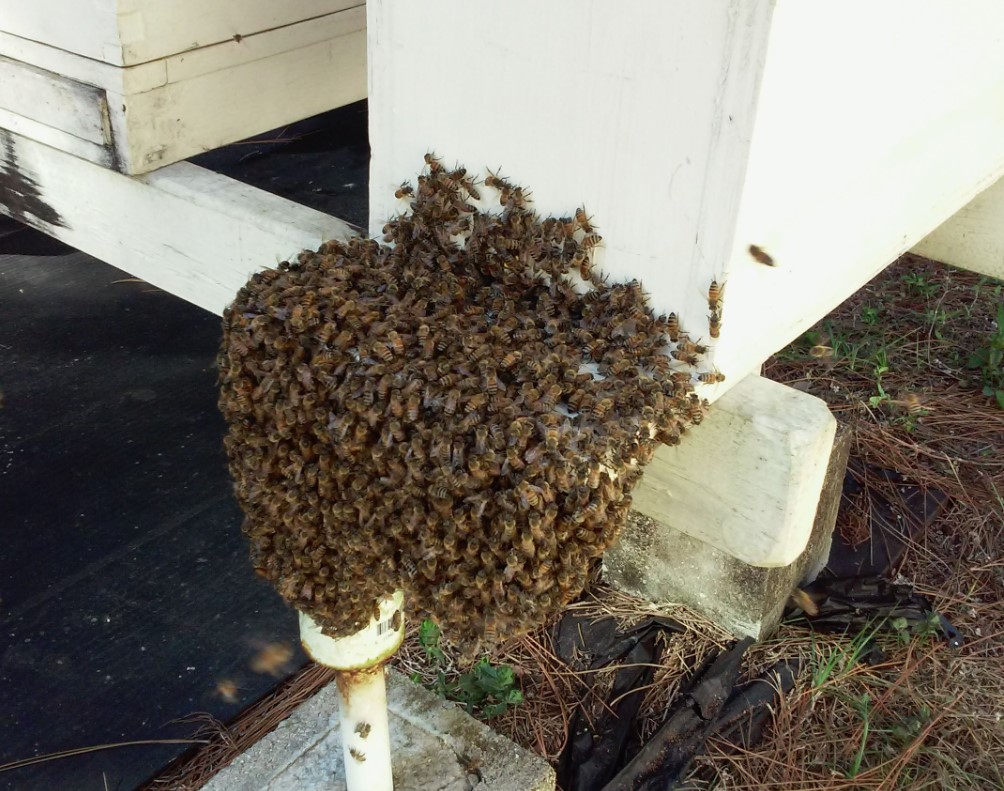Bees are essential to the environment, but when they decide to set up their hives in common locations around homes or businesses, it can become a safety concern. While it’s fascinating to see the intricate designs of a beehive, having them too close to human activity can lead to unwanted encounters. This article delves into the common locations where beehives are typically found and the safe methods professionals use to remove them without harming the bees or the environment.
Common Locations for Beehives
Bees are resourceful creatures and will settle in various locations that offer safety, warmth, and proximity to a food source. Understanding where bees commonly build their hives can help homeowners and business owners take preventive measures.
Attics and Roof Spaces
One of the most common locations for beehives is inside the attics or roof spaces of homes and buildings. Bees are naturally drawn to the warmth and undisturbed nature of these areas. Attics provide them with a quiet environment where they can build their hives without interference. These hidden spaces are often out of sight, which means homeowners may not notice the hive until the bee population grows significantly.
Did you know that bees will travel up to five miles to find a suitable spot for their hive? This means a hive in your attic may have originated from a nearby area, and a nearby colony might be thriving.
Walls and Hollow Spaces
Another common location is the interior walls of homes. Bees find gaps and voids in walls to build their colonies. The sound of buzzing or even the presence of honeycomb inside the walls can indicate that bees have found this as a secure spot. These types of beehives can be tricky to access without professional help, as they are hidden and may require dismantling parts of the structure.
Tree Hollows and Branches
Bees also love tree hollows, particularly those of older, decaying trees. The hollow spaces within trees provide an ideal environment for bees to thrive. This is especially common in wooded areas or suburban neighborhoods where older trees are present. Though less invasive than a hive in your attic, these hives can still pose a risk to nearby people and pets, especially if they become agitated.
Fencing and Outdoor Structures
Bees are also known to nest in outdoor structures such as fences, garden sheds, or even under the eaves of homes. Wooden fences, especially those with cracks or voids, can provide an attractive hiding place for bees. These locations offer shelter from the elements, and often, these colonies can go unnoticed for weeks or even months.
Underground Locations
Although less common, bees have been known to nest underground in burrows. These locations are usually well-hidden and can be difficult to detect unless the ground around the burrow becomes disturbed. Such hives are more often found in fields or rural areas, but they can pose risks to animals and people who unknowingly wander near them.
How Professionals Safely Remove Beehives
When bees set up a hive in an undesirable location, it’s important to have the hive removed safely. Professional bee removal services are trained to handle these situations with care, ensuring that the bees are safely relocated and not harmed in the process.
Assessment and Identification
The first step in bee relocation is a thorough assessment of the situation. Professionals identify the species of bee, the size of the colony, and the best approach for safe removal. Some species of bees are protected by law, which makes it essential to ensure that removal methods adhere to legal and environmental guidelines.
Safe Relocation
In cases where relocation is possible, professionals use a gentle, non-invasive approach to move the bees. This may involve creating a controlled environment for the bees to enter a hive box, which is then transported to a safe location away from human activity. The goal is to preserve the colony and ensure that the bees can continue their important role in pollination.
For hives located in areas like attics or walls, bee relocation specialists will carefully access the hive without disturbing the structure. This prevents damage to the property and minimizes stress on the bees.
Sealing and Prevention
After safely removing the bees, the next step is to seal the entry points to prevent future infestations. Professionals will ensure that any gaps, cracks, or holes where bees might enter are properly sealed. This helps to reduce the likelihood of future hive-building in the same location.
Ethical Considerations
Many bee removal services prioritize ethical methods that involve minimal harm to the bees. For instance, some may use humane traps and relocation strategies rather than extermination. These services recognize the importance of bees in maintaining ecological balance and aim to relocate them to areas where they can continue their natural behaviors without posing risks to humans.
For residents in places like Orange County, professional services such as a bee relocation service Orange County are well-equipped to handle these delicate removals. By contacting a trained professional, property owners can ensure that the bees are safely relocated, and the potential risks to people and pets are minimized.
Conclusion
Bees are an essential part of our ecosystem, but when they choose common locations like attics, walls, or outdoor structures to build their hives, it can pose a safety risk. Identifying the most common locations for bee hives can help prevent unwanted surprises. For safe and ethical removal, professionals use methods that ensure the bees are relocated to a secure environment. By calling on experts in bee removal, homeowners and business owners can resolve bee-related issues without causing harm to the bees, the property, or the people living there.




